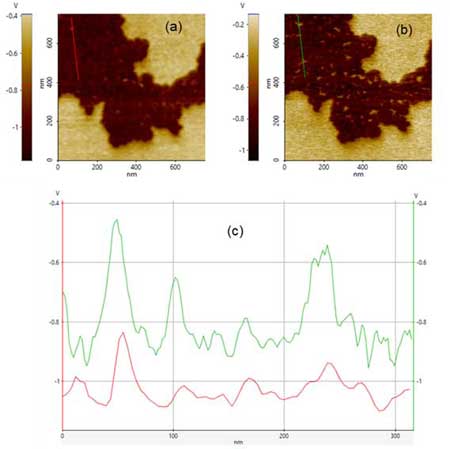Thursday, May 20, 2021
- 12:00 PM
(EST)
Cleveland, New York - 9:00 AM
(PST)
San Francisco, Los Angeles - 5:00 PM
(BST)
London - 6:00 PM
(CEST)
Paris, Rome
Sideband Kelvin Probe Force Microscopy (KPFM) uses the intermodulation of an electrostatic drive force and a mechanical drive force to upconvert the electrostatic frequency to the first flexural resonance, where the high-quality factor of the resonance yields a more sensitive measurement. The Sideband KPFM signal is calculated using a local interaction between the tip apex and the sample rather than a total interaction between the cantilever and the sample, improving the spatial resolution over other technique variations. Join us as the technical services engineer at Park Systems covers the basics and more Sideband KPFM details, including tradeoffs and imaging suggestions for Park AFM with various advanced materials images.

Figure: Surface Potential Difference using Sideband KPFM on Semi-fluorinated Alkane using (a) shorter harder cantilever and (b) longer softer cantilever. Line profiles (c) showing higher resolution with longer softer cantilever (b). (Reference: Surface Potential Imaging via Sideband Kelvin Probe Force Microscopy (parksystems.com)

Presented By :
Ben Schoenek, Senior Technical Service Engineer, Park Systems
Ben Schoenek is a Senior Technical Service Engineer for Park Systems, where he focuses on service and support of AFM systems for Park's research user base. He received his Master's in Physics from Auburn University, and holds a B.A. in Physics from Kenyon College.






